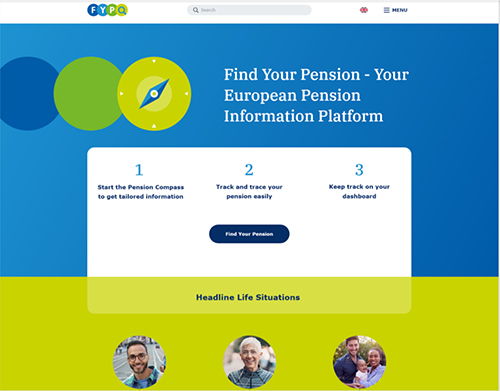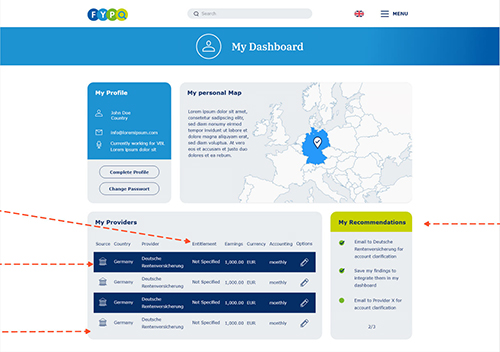Webinar on holistic pension information on the 26th of November
Date: 12/2020
Status update on the Pilot Website
After Prof. Lisa Brüggen (Uni Maastricht) had welcomed the participants and introduced the agenda, Claudia Wegner-Wahnschaffe and Aubery Merens gave a status update on the ETS project as a whole, and on the pilot website in particular. When establishing the pilot website, different perspectives have to be balanced: it’s vital that it must provide information that is understandable and user-friendly for the target group (mobile workers). At the same time it should be a feasible and accurate system which encourages pension providers and others (editors) to give information on their national pension system. These pension providers and national pension systems are highly diverse. A holistic approach is therefore key: the ETS project considers representatives of all three pillars in the different European countries with various pension concepts. This is a challenge, but also a great opportunity: this will be the first platform of its kind to bring everything together!
What functionalities will the FYP portal offer its visitors?
The pilot version of the European Tracking Services on Pensions, FYP, will contain three main functionalities:
- Pension information which is tailored, presented in a user-friendly and encouraging manner, while taking into account different life situations, age groups and specific topics.
- A track-and-trace functionality in order to find relevant pension providers where users may have accrued entitlements while working in Europe.
- The so-called Pension Dashboard as the personal space where individual pension data can be collected by accessing national services of connected countries (in the first phase from the Belgian tracking facility). A personal action list, as well as the results of the tracking results under #2, can be saved in a personal pension folder (after registration).
It is very important to think from the perspective of your target group when providing pension information. As concluded in the 2019 Workshop held in Leuven, mobile workers do have special needs and requirements, as they have a completely different background as nationals of a certain country searching for pension information on the national websites. In order to shape targeted information the following approach was initiated: the creation of different personas of mobile workers, such as a construction worker or a carer professional in the health sector. A standardized interview format with experts who consult those groups were used.
After giving some insight in the search function and different entry points, a sneak preview of the FYP pilot was presented.


An exercise to write content that engages
When creating pension information in the above described ETS context, this ‘content’ will comprise useful and important aspects on e.g. mobility and pensions or when to retire. In order to provide answers, we have to consider the different sources as well as the diverse national pension concepts. To make the perspective of mobile workers tangible, the participants got a challenging assignment in so-called breakout sessions: write an answer to the question ‘I worked in different countries, how much pension do I get’? While doing this, they had to keep a specific persona in mind, such as ‘Andrej the construction worker’. Divided in groups per pillar, the participants had 5 minutes to formulate an answer, which they could then reflect and discuss together with the group members. In the end, all groups had similar observations: this is a question that triggers more follow-up questions than answers. Therefore, it is important to guide users in how to find their way and not overwhelm them. Ultimately, formulating the answer in a motivating and friendly manner was considered helpful.
Link: Research of Lisa Brüggen
In the final part of the workshop, Lisa Brüggen, professor at Maastricht University, shared insights from her own research on pension communication. The main takeaway: it is very important to write from the perspective of your target group: what does what you are writing mean to them? A holistic response that helps the user therefore is key to the ETS project: reusing texts from individual countries and providers will not suffice! Additionally, the key to pension communication is to keep it simple and avoid jargon. However, some things do need some further explanation: it is then still recommended to keep the first layer of information simple, but to add more layers with follow-up information. All findings and results will be included in the ETS content guideline which will be the basis and framework for the content to be provided on the FYP portal.
Altogether, it was an interactive and inspiring workshop. We would like to thank everyone for their participation and input, and we of course hope to see you again at one of our next events!